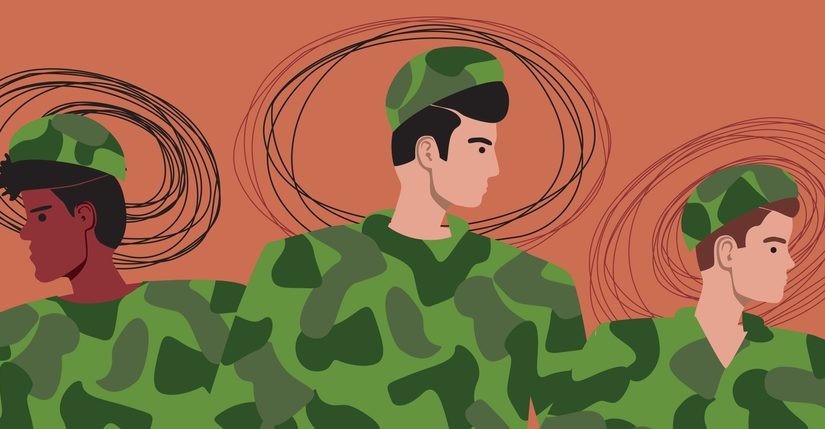Post-Traumatic Stress Disorder (PTSD) is a serious mental health condition that can affect anyone who has been through a traumatic event. While most people are aware that PTSD can be caused by exposure to trauma, very few realize that it also has the potential to spread from person to person.
Yes, you read that right. PTSD can be contagious.
You must have come across the saying, “One bad apple spoils the whole bunch”? Well, it turns out that the same concept is applicable to Post-Traumatic Stress Disorder (PTSD). This condition, often traced in veterans and survivors of traumatic events, can actually be truly contagious and spread from person to person.
Perhaps you’re asking yourself, “How is that even possible?” After all, PTSD is a mental health condition that stems from experiencing or witnessing a horrific event, so what are the chances that it can spread? The answer lies in the way that our brains process trauma and how that processing can impact those around us.
When a person experiences a traumatic event, the brain can enter into a heightened state of alertness as a way to shield them from future harm. However, this heightened consciousness can also lead to the development of PTSD, which is characterized by symptoms like flashbacks, nightmares, anxiety, and avoidance of certain triggers.
Now, this is where things get interesting. When someone with PTSD is around others who are not affected by the disorder, their brain’s heightened state can actually trigger a similar response to people around them. This is so because our brains are wired to pick up on cues from others and copy their behavior as a way of attachment and connecting with them.
Research has shown that people who have close proximity to someone who has PTSD are more prone to experience symptoms themselves. For example, spouses or family members of someone with PTSD may also experience anxiety, depression, or even develop PTSD by themselves.
This phenomenon is described as secondary traumatic stress or compassion fatigue. It happens when someone is exposed to the trauma of another person, and as a result, experiences similar symptoms. This can occur in a variety of contexts, including healthcare professionals working with patients who have experienced trauma, or first responders who witness traumatic events.
It’s important to understand that PTSD is not something that someone can simply “snap out of.” It requires professional help, support from loved ones, time, and patience to heal.
The concept of PTSD being contagious may seem alarming, but it also provides a glimmer of hope. If we can recognize that this condition can spread from person to person, then possible steps can be taken towards preventing its spread and helping people affected by it.
One way to ward off the spread of PTSD is by creating a supportive environment for those who have experienced trauma. This includes providing access to mental health resources and encouraging open communication and clear negative thoughts about their experiences and emotions. It also entails being aware of how our own behavior and emotions can influence people around us.
In short, there’s no denying that PTSD has the potential to spread from person to person, but it’s important to understand that this doesn’t mean that people who have been suffering from the condition should be feared. Rather, they need to be dealt with empathy and compassion since PTSD is a complex and challenging condition that requires support from those around them. Let us help you find the right care your mental health has been longing for and work towards creating a community where mental health is a priority.
With NABHS, be guided to complete recovery and find the help you need to heal.
















